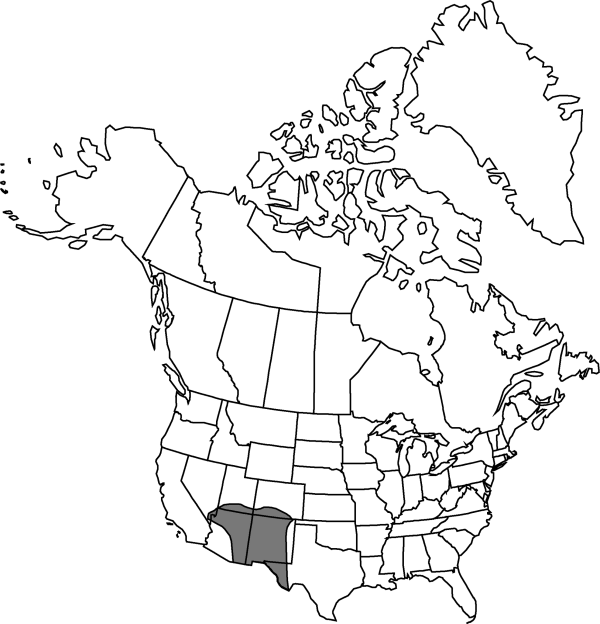Mirabilis oxybaphoides
in W. H. Emory, Rep. U.S. Mex. Bound. 2(1): 173. 1859.
Stems decumbent to prostrate, often tangled in other vegetation, 2–12 dm, herbaceous, puberulent in lines or throughout, glandular or not. Leaves spreading; petiole 0.5–3.5 cm; blade broadly deltate or ovate, 1.5–8 × 1–7.5 cm, fleshy, base cordate, apex usually acute or acuminate (rounded), surfaces glabrous or pubescent, and then often glandular. Inflorescences loosely and narrowly cymose; involucres solitary or clustered at ends of branches, or solitary in axils, 5–9 mm, lobes triangular, base 50–70% of height. Flowers 3 per involucre; perianth purplish to pale pink (white), 0.5–0.9 cm. Fruits olive, dark brown and black-mottled, or evenly black, sometimes faintly marked with 5 shallow grooves, broadly obovoid to nearly spheric, 2.5–3.5 mm, smooth or slightly rugose. 2n = 60.
Phenology: Flowering spring–fall.
Habitat: Brush or boulders, banks in woodlands, moist areas
Elevation: 1400-2600 m
Distribution

Ariz., Colo., Nev., N.Mex., Okla., Tex., Utah, Mexico (Chihuahua, Coahuila, Nuevo León).
Discussion
Selected References
None.